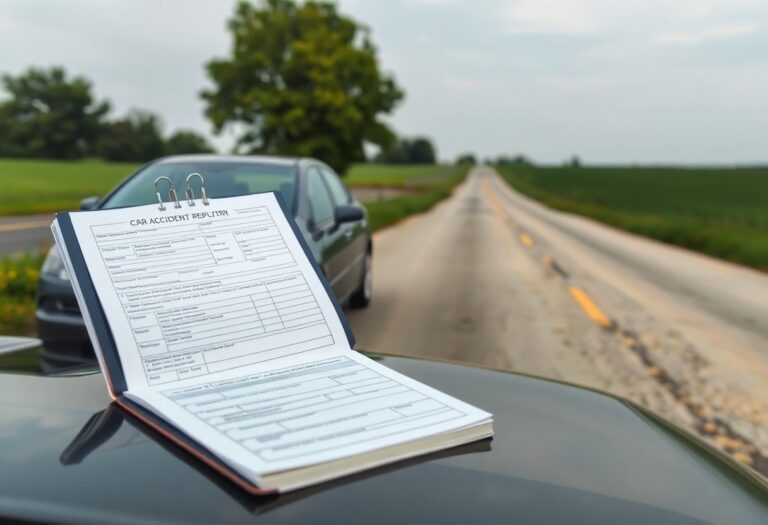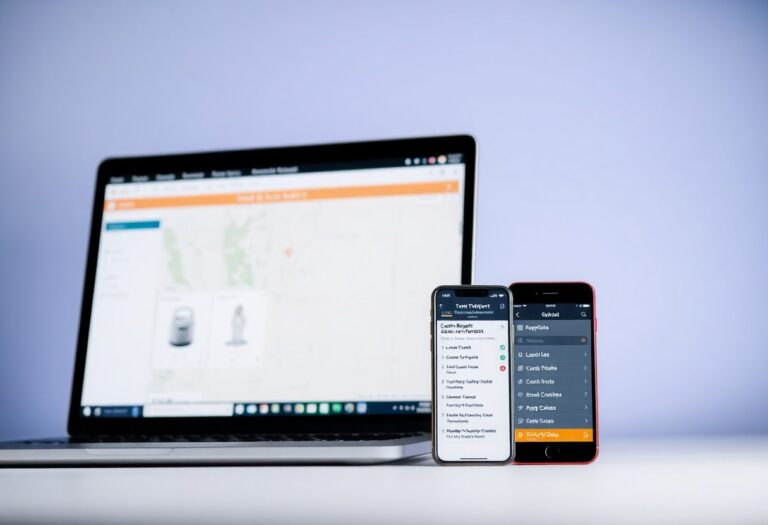Over time, obtaining car accident reports in Grimes County, Texas, can seem daunting. However, with the right knowledge and steps, you can efficiently access your report with ease. This guide will take you through each step, ensuring you have the information you need at your fingertips. From understanding the necessary forms to knowing the fees involved, you’ll be fully prepared to navigate the process and secure your important documentation without unnecessary hassle.
The Legal Landscape of Accident Reporting in Grimes County
Accident reporting in Grimes County operates within a framework established by state laws and local regulations. You’ll find that understanding this legal landscape is vital for navigating the aftermath of a car accident. Accurate, timely reporting not only facilitates your access to information but also plays a vital role in any potential claims or legal actions that might arise from the incident. Failing to adhere to these laws can lead to complications in your case, thus emphasizing the need for awareness and compliance.
Understanding Texas State Laws on Accident Reports
In Texas, law mandates that accidents resulting in injury, death, or significant property damage be reported to law enforcement within a specific time frame, typically 10 days. You can find these regulations outlined in the Texas Transportation Code. Failing to file the required report can have serious implications for your case, potentially impacting insurance claims and liability assessments down the line.
The Role of Local Law Enforcement Agencies
Local law enforcement agencies in Grimes County are responsible for the initial investigation of accidents and the creation of official reports. Officers document vital factors, such as the circumstances of the accident, witness statements, and any citations issued. Their findings serve as a foundational element in determining fault and can significantly influence the outcome of insurance claims and legal proceedings.
When a car accident occurs, officers from local law enforcement will respond, assess the situation, and collect pertinent details. This includes taking photographs, measuring distances, and interviewing involved parties and witnesses. Their collected evidence will be compiled into an accident report, which becomes an official document representing the incident. It’s in your best interest to obtain a copy of this report, as it will play a key role in supporting your claims. Additionally, local agencies often liaise with insurance companies and legal representatives, making their reports invaluable in the pursuit of justice and compensation for victims.
Decoding the Accident Report: What You Need to Know
Understanding the intricacies of a car accident report can significantly impact your claims process. These documents serve as an imperative record of the incident, capturing crucial details such as the time, location, and parties involved. Familiarizing yourself with the contents enables you to navigate insurance negotiations deftly and helps ascertain liability effectively.
Key Elements Included in Car Accident Reports
Car accident reports typically include several key elements: the names and contact information of involved parties, vehicle descriptions, insurance details, witness statements, and descriptions of the accident’s circumstances. Additionally, diagrams may illustrate the scene to provide further clarity. Each piece of information plays a pivotal role in assessing fault and aiding in insurance claims.
Common Misconceptions About Report Contents
Many people mistakenly believe that all car accident reports contain the same level of detail or that police bias influences the report’s accuracy. In reality, while reports provide a comprehensive overview, they may omit certain personal interpretations or circumstantial factors determined on-scene.
Your understanding of these misconceptions will serve you well. For instance, some individuals think that officers always record each witness’s statement, but this isn’t the case. Law enforcement prioritizes collecting imperative facts, which might leave out less relevant details. Consequently, while the report may highlight significant data, it could lack nuanced insights influencing the case’s outcome. Recognizing this helps you gather additional information independently to supplement the report, making your claims more robust.
Step-by-Step Process for Requesting Your Accident Report
| Step | Description |
| 1 | Identify the right agency to contact for your accident report. |
| 2 | Gather necessary documentation and fees. |
| 3 | Submit your request through the appropriate channel. |
| 4 | Wait for the report to be processed and delivered to you. |
Identifying the Right Agency to Contact
Your first step in accessing your accident report is identifying the right agency. In Grimes County, the Grimes County Sheriff’s Office or the Texas Department of Transportation often handles such requests. If your accident was reported to the local police department, they may also have the report on file, so confirm the jurisdiction before proceeding.
Necessary Documentation and Fees
To successfully obtain your accident report, you will need to gather specific documentation, including your driver’s license, the report number (if available), and any details surrounding the accident, such as dates and location. There is typically a small fee for processing the report, often around $6.
These documents are important for verifying your identity and ensuring that you are entitled to access the report. If the accident involved more than one party, having the report number helps expedite your request. For the fee, check whether the agency accepts cash, credit, or debit for the transaction, as payment methods can vary by office. Familiarizing yourself with these requirements beforehand will streamline the process and reduce potential delays.
Navigating Potential Roadblocks
Accessing car accident reports in Grimes County can sometimes encounter obstacles. You might face challenges like improper documentation, lack of specific information about the incident, or varying interpretations of eligibility from officials. To mitigate these issues, be sure to gather all relevant details before submitting your request and double-check that you’ve included necessary identification and any required fees. Keeping comprehensive records helps strengthen your case and minimizes the chance of rejection.
What to Do If Your Request is Denied
If your access request is denied, don’t lose hope. You have the right to ask for clarification on the reasons behind the denial, allowing you to rectify any issues. Consider submitting a formal appeal. This process often involves filling out specific forms and providing additional proof or documentation that may support your claim for the report.
Handling Delays and Ensuring Timely Access
Delays can occur for various reasons, including high volumes of requests or administrative backlogs. To prevent or handle these issues effectively, maintain open communication with the relevant office. You can ask for estimated timelines and regularly follow up on your request’s status, allowing them to know you are checking in on your application.
When dealing with delays, it may be beneficial to use multiple channels of communication. Try contacting the office via phone and email for quicker responses or clarity. Moreover, don’t hesitate to directly visit the office if possible. Personal interaction often expedites processing times. By asserting your need for timely access and remaining organized in tracking your communications, you enable a smoother experience even when roadblocks arise.
Utilizing Your Accident Report: Next Steps
Your accident report serves as a vital resource in guiding your next steps after a collision. Gathering evidence from this report enables you to support your claims effectively, communicate with insurance providers, and address any potential legal matters. Making a comprehensive review of the details, such as witness accounts and damage descriptions, provides you with the foundation necessary to seek rightful compensation for damages, medical expenses, and lost wages resulting from the accident.
How to Leverage Report Information for Insurance Claims
The report contains important details needed to process your insurance claim efficiently. Use the accident report to detail the incidents leading up to the collision, focusing on factors like fault or negligence. When filing your claim, attach any photographs, witness statements, and police findings documented within the report to bolster your case. Clear, factual information regarding the incident will increase the likelihood of a favorable settlement from your insurer.
Engaging Legal Counsel: When and Why to Seek Help
Consulting with legal counsel is advisable, particularly if the accident involved significant injuries, substantial damages, or disputed liability. An attorney specializing in personal injury can navigate the complexities of your case, ensuring your rights are protected. They can help negotiate with insurance companies and represent you in court if necessary, ultimately aiming for the compensation you deserve.
Engaging legal counsel is particularly vital if you encounter pushback from insurance companies or if your medical expenses escalate. An attorney can help you interpret the nuances of your accident report and ensure that all relevant evidence is presented effectively. You may also benefit from their experience in similar cases, providing insights into potential pitfalls and strategies for a robust claim. A knowledgeable lawyer will not only advocate for your interests but also enable you to focus on healing while they handle the legal aspects of your case.
To wrap up
To wrap up, accessing car accident reports in Grimes County, Texas, is a straightforward process when you follow the outlined steps. By gathering necessary information and utilizing the appropriate resources, you can efficiently obtain your report. Whether you are seeking a report for insurance purposes or personal records, knowing how to navigate the system will save you time and ensure you have the imperative documentation you need. By staying informed and organized, you will be better prepared to handle any situation that arises from your car accident.













